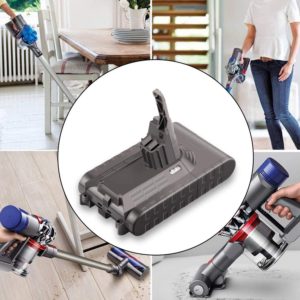There are a number of cordless tools, drill batteries and chargers on the market. Spending a lot of money on them is easy. But getting your money’s worth is harder. Knowing the proper way to use and take care for your cordless tools can be the difference between a lithium-ion power tool battery that dies after a year and one that’s still going strong after three. Today AussieBatt cordless drill battery experts share following tips to help you get the most out of your cordless power tools and drill battery.
You may be drawn to a drill, but think about future tools before you choose. If the batteries and charger from your first tool can power other tools, you can buy “bare” tools in the future and save a lot of money. Most manufacturers offer a wide variety of tools that accommodate the same battery type. Eighteen-volt tools in particular have a broad range of options.
Hitachi’s 18 Volt One+ system has more than 50 tools that fit its 18-volt Hitachi BCL1815 battery pack and includes cordless lawn, garden and household products. Sticking with one voltage size from a single brand means you’ll always have charged batteries and enough chargers.
“Fuel gauges” right on the pack or tool can be a lifesaver for lithium-ion batteries. Not only can you tell at a glance how much charge is left when you’re up on a ladder, you’ll extend the life of the battery by getting it on the charger before it’s fully discharged.

Same battery voltage, different run times
Cordless drill batteries of the same voltage often come with different amp-hour ratings. Those with higher amp-hour ratings are larger and heavier, and they cost more and have longer run-times. Some companies list the amp-hours on the battery; others name them (such as DeWalt’s compact and XRP versions and Bosch’s Slim Pack and Fat Pack; neither shown). A compact 1.5-Ah battery (vs. a larger 3.0-Ah MAKITA 1823 Drill Battery) is usually fine for weekend DIYers, especially with a fast charger.
Lithium-ion batteries are quickly displacing nickel cadmium as the standard batteries on cordless tools. Although lithium-ion (li-ion) batteries can cost twice as much or more, they’re worth it. They’re small and lightweight, they run at top power longer, they’re good for two to three times more charge cycles than nicads, and they can sit for months without losing a charge.
They do have a couple of downsides, however. Besides cost, they perform worse than nicads in extreme temperatures (below zero and above 105 degrees F). But competition among manufacturers is starting to drive down prices of lithium-ion batteries. And the newest “smart” chargers and “extreme weather performance” features help keep lithium-ion batteries cool while charging, and working longer in below-zero temperatures.
Smart rapid chargers extend power tool battery life
Batteries are the costliest part of your cordless tool, and a bad charger can shorten your battery’s life due to incorrect charging and overheating. “Smart” chargers like the Makita DC18RA Rapid Battery Charger have electronic sensors and temperature and voltage controls that communicate with a chip inside the battery pack for optimal charging. The Makita DC18RA charger has a fan that blows air through the battery to cool it before charging so the battery can be charged quickly (a 3.0 amp-hour lithium-ion battery in 22 minutes). It costs about $45 and up at home centers and cordless drill batteries online retailers.
Craftsman’s NEXTEC QuickBoost 12V Charger achieves a 25 percent charge in three minutes and a full charge in 30 minutes. This means you can get enough juice in a dead battery to finish up that task you’re working on without waiting.


1 thought on “How to choose the best cordless tools and power tool batteries”
Comments are closed.